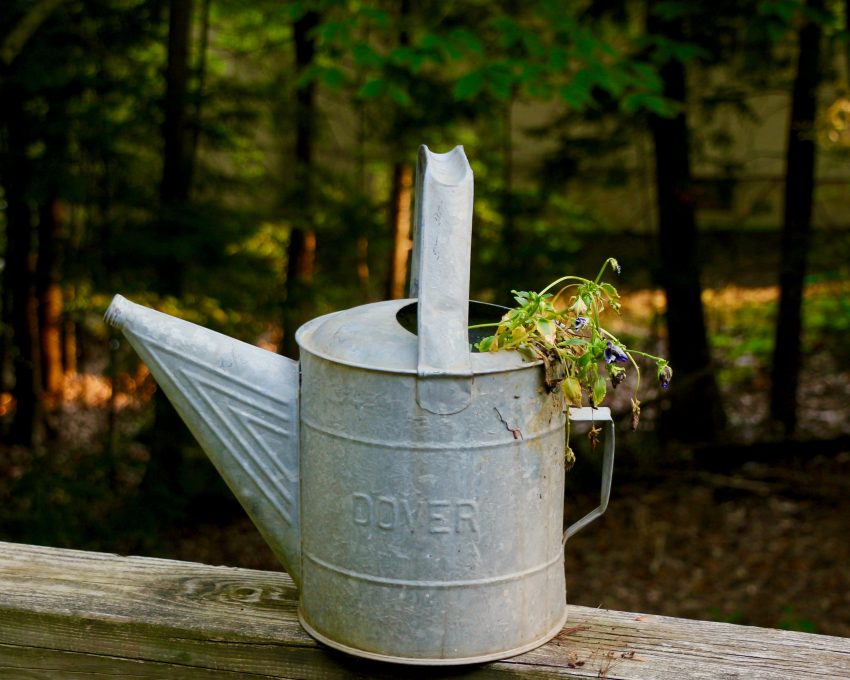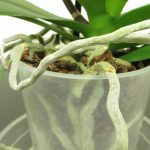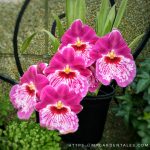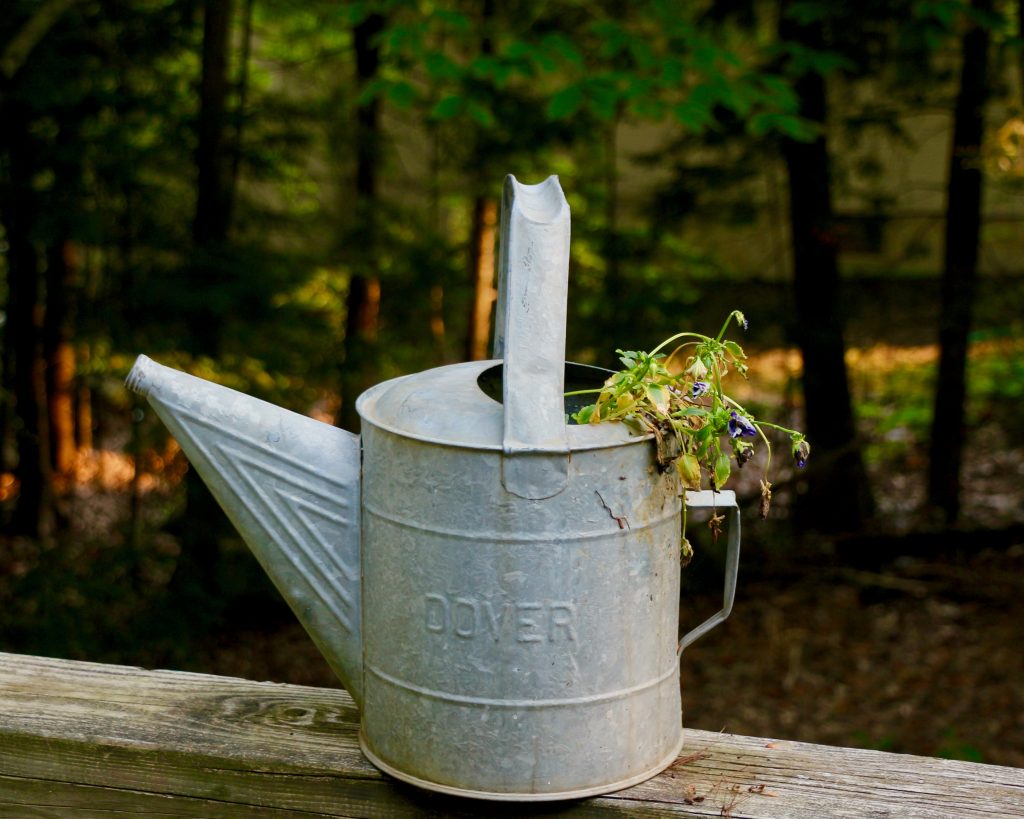
Orchids are easy to grow and care for once you get the hang of it. Location, water and fertilizer are a few factors that contribute to the health of the plant. I will say that growing orchids and caring for them is an art – there is no specific right way to do it. You to have to adopt a method which works well for you and your circumstances. Once you have learned the art you are the master. Watering is one of the key tricks you need to master to become an expert Orchid grower.
How orchids get water in nature
In the wild, most of the orchids are epiphytes (they grow on other trees). In tropical forests these plants grow under the canopy mounted to other plants or dead barks and they never come in contact with the soil. They can sustain themselves from the high humidity and rain water. Orchids tend to store water in their pseudo bulbs, thick succulent leaves and aerial roots. When the water is scarce they use the stored water and survive.
So orchids differ from traditional plants, like tomatoes. Their water and grow medium are extremely different. And orchids can tolerate a minor mismanagement(can manage underwatering but not overwatering) for short period of time. It is the prolonged mismanagement that results in plant loss. But don’t worry, in this article we are going to see how to water the orchids of all kinds.
Watering methods that I follow
Light watering
When the plant dries to about 80%, I use a mister on the aerial (visible) roots to prevent root drying. This is to wet the plant without drenching them with water.
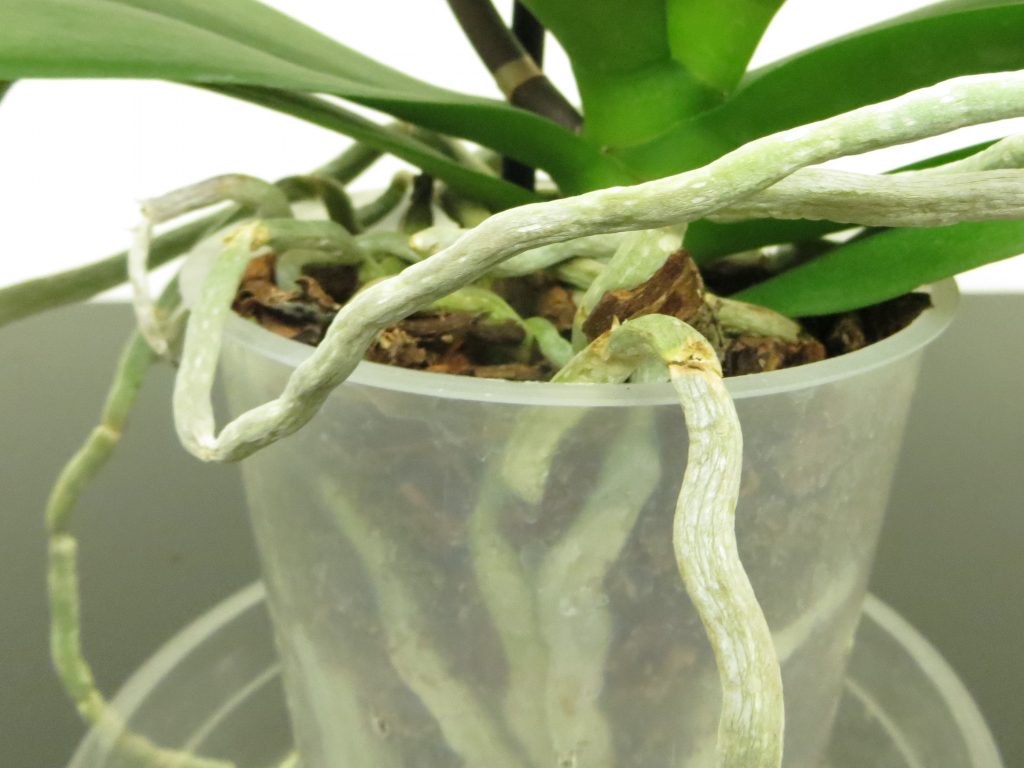
Deep watering
Once in a month I take my plants to the sink and pour water in the pot, so that the excess water runs out freely. Then place the pot on a drying towel to ensure that water is not dripping from the bottom of the pot. Alternatively you can also soak or drench the plant root (not the entire plant) in a tub or bucket filled with water. This method works well for orchids mounted in barks and baskets as well.
Prevent water damage of leaves and crown
Whether watering or misting make sure that only the roots and the plant medium is soaked. Don’t pour water over the leaves or at the crown of plants (especially phalaenopsis) as the plants don’t appreciate that, it may cause crown rot. If you happen to pour water over the crown just wipe it with a paper towel or a cloth. Never let the plants stand in water for a long time. In soaking method, care should be taken not to soak diseased plants along with the healthy ones to prevent the disease from spreading.
When to water your orchids
Here are a few factors that determine the watering schedule:
- In summer orchids need more water than winter as the plants go dormant during winter.
- Orchids in bark(mounted orchids) dry out quickly than orchids in pot with medium.
- Potting medium and humidity affects how quickly the medium will dry out
Here are a few practical tips to find optimal schedule for watering your orchids:
- For phalaenopsis orchid (in a transparent container) look at the roots at the bottom of the plant. If they look dry or white, its time to water. Once watered the roots will turn green. To know more about how to find the health of the orchids by looking at the roots look into my article on selecting healthy orchids.
- Other orchids press you finger on the potting medium to find out any moisture or use a wooden stick or pencil.
- Another method which works for all the orchids is take the pot in your hand and try to feel the weight to see if the pot is moist or not. Water is heavy, dry pot will weigh less. It may take a few tries to perfect this method.
Under-watering
Under-watering will affect the growth of the plant. So once the plant has outgrown its pot, the plant medium may dry out quickly due to lack of water. One solution to this problem is to transfer plant to a pot which is one or two sizes bigger (depending upon the plant)than the previous pot with new plant medium. Even though the growth may affect in the short term it won’t kill the plant if taken care immediately. It may affect the flowering cycle.
Over-watering
Over-watering is watering more frequently than needed or water stagnation (placing the plants in the ornamental vase without drainage immediately upon watering ). If you over-water your orchids, it will result in root rot. If you suspect the plant is being over-watered, take the plant and have a look at the base of the plant, if the roots are turning brown or black or water is stagnant in the ornamental pot or the pot feels heavy, immediately remove the plant from potting medium, let the plant dry in air then trim away all the dead roots then replant in new potting medium. This way you will help your plant to be alive again. If the plant managed to survive don’t expect flowers for another year or two.
Cleaning Orchids
Most of us will be growing orchids as indoor plants most of the year or at least during winter. If you are a cleanliness freak who has to urge to clean the plant leaves dip a paper towel or soft cloth in room temperature, wring out excess water then gently wipe the leaves, you are all set to go. Never spray/ splash water on the plant for cleaning.
Some types of orchids (especially Phalenopsis) have aerial roots. The plants need them for its proper growth and nutrition. If you got a new pruning shears don’t try your pruning skills on the aerial roots of orchids or on the healthy bulbs or on healthy leaves. You will get opportunity to show off your pruning skills 🙂
In summary orchids can survive without water to some extent but not standing water on the pot.
While you are contemplating your orchid watering plan, take a moment to enjoy my little orchid gallery in this site.

